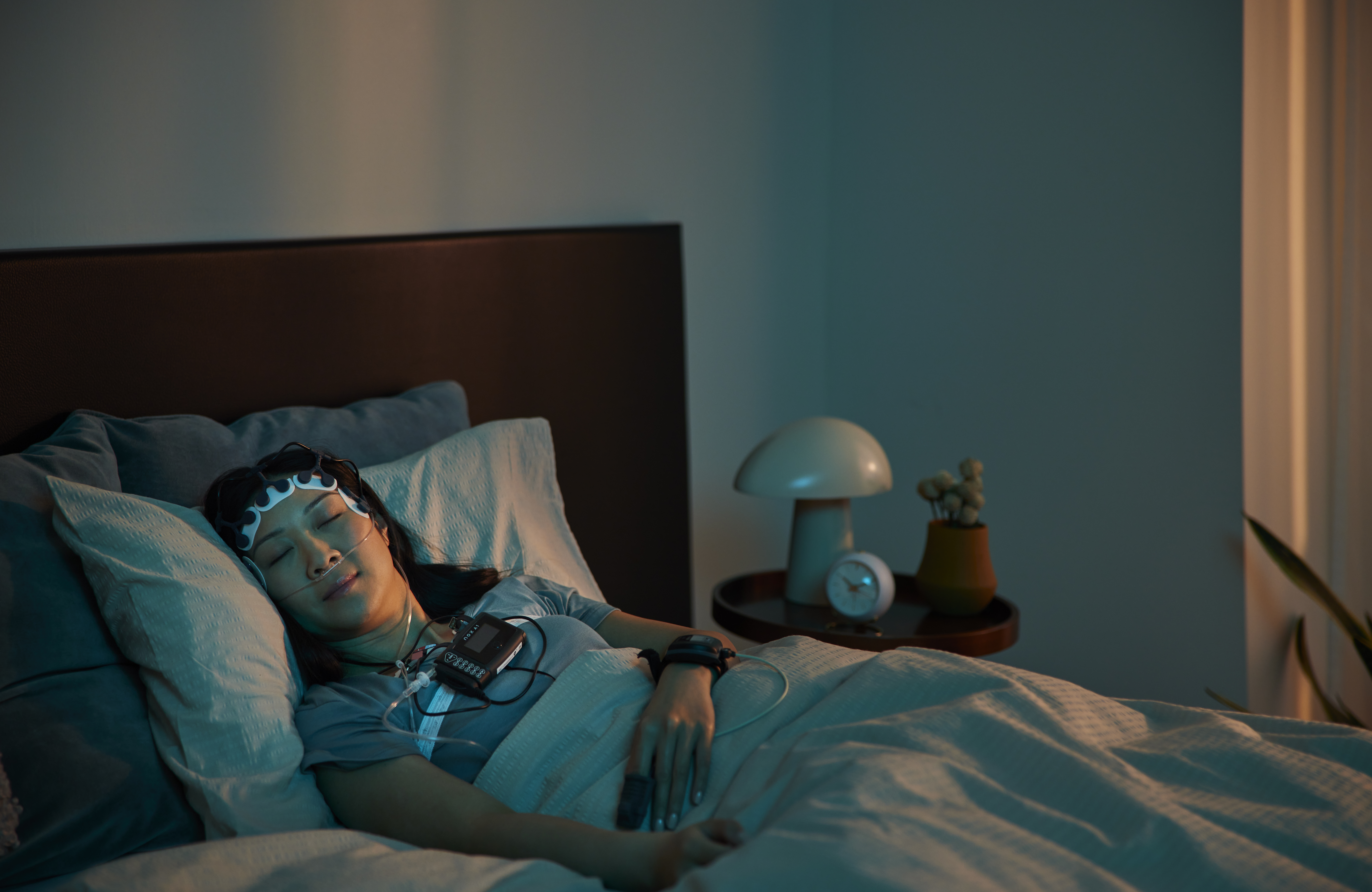As part of Nox Medical’s commitment to the advancement of sleep diagnostics through simplification, increased efficiency, and comfort for all patients, the company launched a three-part webinar series titled See Everything at Once to look at the state of polysomnography studies and what the future may hold for attended in-laboratory and unattended ambulatory studies.
On October 20, 2021, the first session featured a conversation with Naresh Punjabi, MD, Ph.D., about using the latest innovation in PSG, the Nox Self-Applied Somnography™ (Nox SAS) by Nox Medical for research purposes. Dr. Punjabi is a Professor of Medicine and Chief of the Division of Pulmonary, Critical Care and Sleep Medicine at the University of Miami, Millar School of Medicine. He is also the Chief of Pulmonary and Sleep Medicine at Miami VA.
Dr. Punjabi and his team of researchers utilized the Nox SAS in a multicenter AIDS cohort study (MACS), an ongoing cohort study of the natural and treated history of HIV infection in men. The study includes both HIV-infected and uninfected men and started in the mid-1980s. Every six months, the individuals undergo semiannual visits for standardized interviews, phlebotomy, and, beginning in 2018, somnography.
“One of the challenges was how do you do studies for research in such a large population, which is in the thousands, and do it such that it’s cheap, simple, and good quality. And how do you do it without expertise instantness? Which was very critical for us,” said Dr. Punjabi.
Coincidentally, Nox Medical was developing technology now known as Nox SAS around 2018 and was able to assist Dr. Punjabi and his team in collecting polysomnography data in more than one thousand individuals to date. The Nox A1 PSG system, and now also the Nox A1s, can be configured with the Nox SAS for at-home sleep studies.
“The unique aspect of this is the concept of a self-applied,” said Dr. Punjabi and goes on to explain the innovative cable from the monitor to the frontal area. “The convenience of a frontal montage is that a participant can place the electrodes by looking in the mirror without much discomfort or difficulty. Aside from this frontal montage, everything else that we are familiar with from polysomnography is available with the configuration with the Nox A1.”
For simplicity and ease of application’s sake, Dr. Punjabi and his team collaborated with Nox Medical to develop methodology over the years to give patients access to instructional videos, and take-home cards for the following at-home application process:
- Placement of body electrodes
- Placement of leg electrodes
- Placement of body cables
- Connection of body cables
- Connecting effort belts
- Placement of face electrodes
- Connecting face cables
- Placement of nasal cannula
- Placement of wrist oximeter
- Starting the recording
Dr. Punjabi then shares the success of conducting Nox SAS sleep studies for research purposes in the MACS study over 14 months.
“Out of the 943 individuals that agreed to have home polysomnography, we were able to get good quality polysomnography data on 793 on just the first attempt. We did go for a second attempt on those that failed and got an additional 58 individuals to give us good quality sleep data,” said Dr. Punjabi.
Good quality sleep data was considered successful if all signals — oximetry, belts, EEG signal, ECG signals, and legs — were present for at least three hours.
Successful home polysomnography with EEG using the Nox SAS was obtained in 90.2% of the sample. He continued, “Simply put, 90 percent of the time, you can get an acceptable study (with the Nox SAS) that will provide you with all of the information that goes above and beyond respiratory polygraph, including the EEG.”
Dr. Punjabi explained that the leading reason (34.6%) for the 16% of unsuccessful studies was related to oximetry not having a contiguous signal for at least three hours. His team also evaluated signal quality as excellent, very good, good, and fair based on the duration of artifact-free data and certain criteria.
“Over the 14-month period, 85% of our studies that were successful were rated excellent or very good. Even the good and fair were quite stable over the period we used this technology.”
Before concluding his presentation, Dr. Punjabi reviewed several studies chosen at random and stated,
“From our experience, we clearly can see that this (Nox SAS) is a simple approach. There are techniques that are available that we and Nox have developed to make it relatively simple. We think it is extremely feasible, and we’ve shown that. Of course, it’s also cost-effective because we aren’t paying the cost of an in-lab study. Finally, we are measuring sleep at home…which means it is as representative as we could get to individual sleep at home.”
The session wrapped with a Q&A with Dr. Punjabi, where he answered compelling questions, such as the following:
- Did you experience different kinds of populations, such as older patients or patients with comorbidities? Did you see any trend that older populations were unable to do this versus the younger?
- Why is this a better way to do sleep studies, such as Level I, Level II, and HSAT?
- Considering the narrow forehead of some patients, will there be artifacts if leads are placed closely together?
- Do you feel there will be better reimbursements for this type of study?
For answers to these questions, and catch up on the full presentation below.
Topic: Webinar





